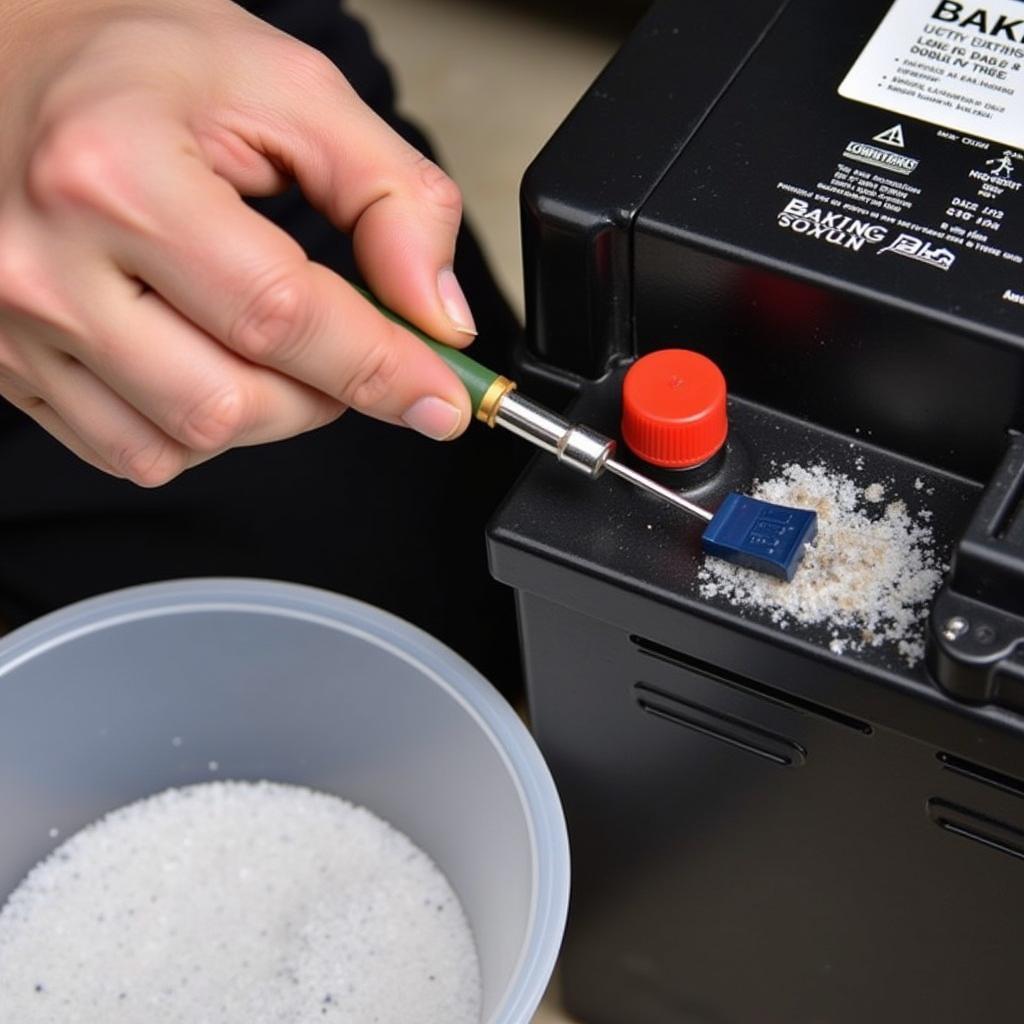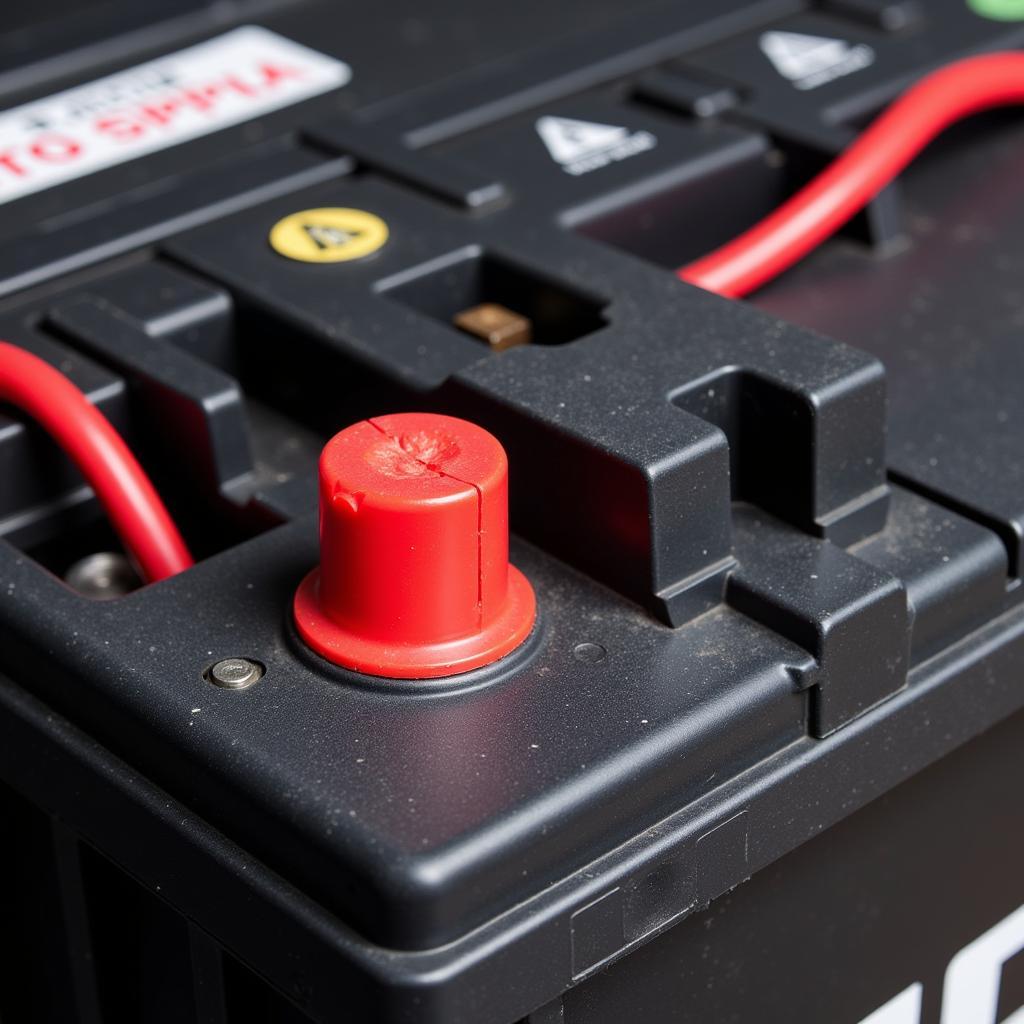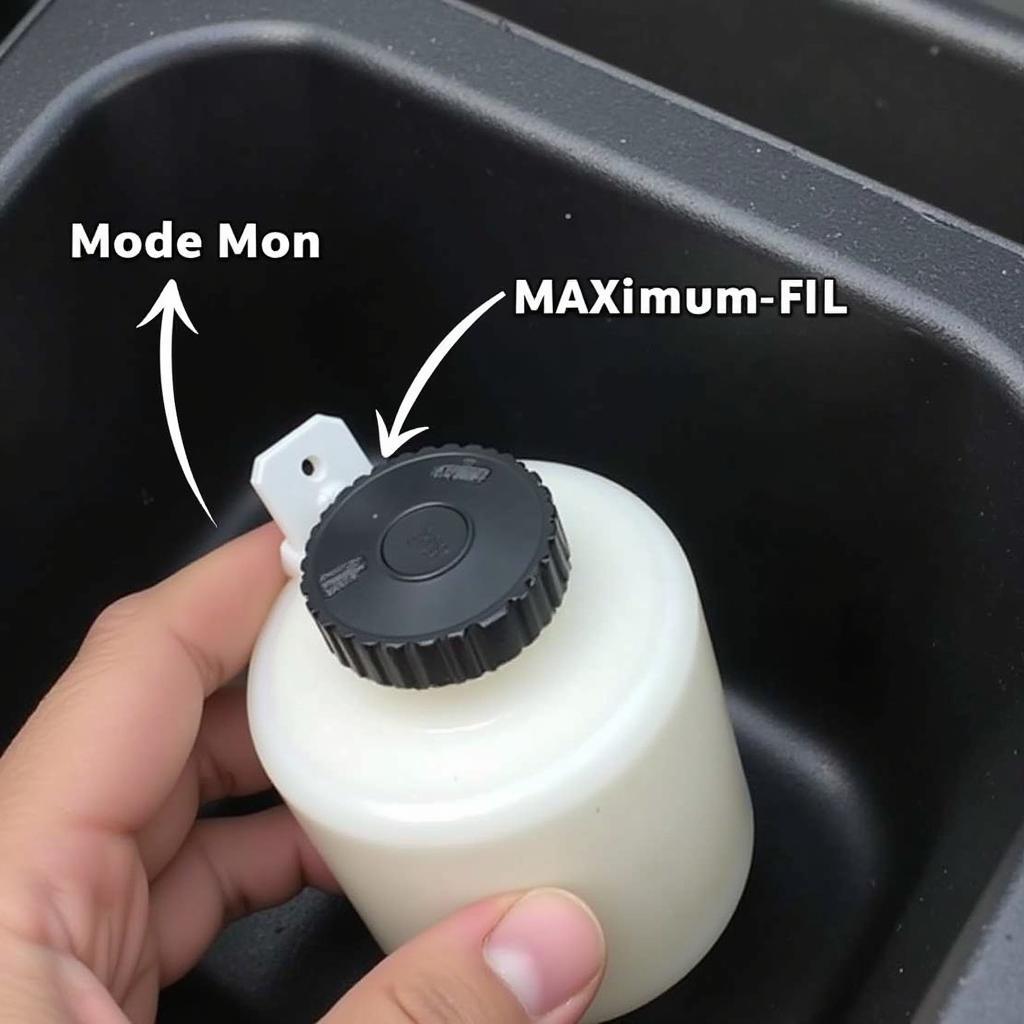Car battery connection problems can leave you stranded and frustrated. Understanding the causes, symptoms, and solutions for these issues can save you time, money, and a lot of headaches. This comprehensive guide will walk you through everything you need to know about diagnosing and fixing car battery connection issues, from loose terminals to corrosion and more.
Having a reliable car battery is essential for starting your vehicle and powering its electrical systems. battery charger that charges dead batteries can be very useful when you face a dead battery situation. However, sometimes the problem isn’t the battery itself, but rather the connections. A poor connection can prevent the battery from delivering the necessary power, leading to starting problems and other electrical malfunctions.
Common Causes of Car Battery Connection Problems
Several factors can contribute to car battery connection problems. Some of the most common include:
- Loose battery terminals: This is often the easiest problem to fix. Over time, vibrations can loosen the terminals, disrupting the electrical flow.
- Corrosion: Corrosion on the battery terminals and cables can create a barrier that prevents proper electrical contact. This is often indicated by a white, powdery substance around the terminals.
- Damaged battery cables: Frayed, cracked, or broken battery cables can significantly impair the flow of electricity.
- Faulty battery terminals: In some cases, the battery terminals themselves might be damaged or corroded beyond repair.
Identifying Symptoms of Car Battery Connection Problems
Recognizing the symptoms of car battery connection problems is crucial for timely intervention. Here are some key indicators to watch out for:
- Difficulty starting the engine: This is the most common symptom. The engine might crank slowly, or not at all. Sometimes a bad battery can even trigger your car’s anti-theft system, so you may want to understand how can a bad battery cause anti theft.
- Dim headlights or interior lights: If your lights are dimmer than usual, especially when the engine is off, it could point towards a connection issue.
- Clicking sound when turning the key: A rapid clicking sound when you try to start the car often suggests a weak battery connection or a dead battery.
- Electrical malfunctions: Problems with other electrical components, such as the radio or power windows, could also stem from a poor battery connection.
How to Fix Car Battery Connection Problems
Addressing car battery connection problems often involves simple DIY fixes. However, if you’re uncomfortable working with electrical components, it’s always best to consult a qualified mechanic.
- Safety First: Before you begin, always disconnect the negative battery cable first to prevent accidental shorts. Wear safety glasses and gloves for added protection.
- Inspect the Terminals: Carefully examine the battery terminals and cables for any signs of corrosion, looseness, or damage.
- Clean the Terminals: If corrosion is present, clean the terminals and cable ends using a wire brush and a mixture of baking soda and water.
- Tighten the Terminals: Ensure the terminals are securely attached to the battery posts. Use a wrench to tighten them, but avoid over-tightening.
- Check the Cables: Inspect the battery cables for any signs of damage. If the cables are frayed or cracked, replace them immediately.
 Cleaning Car Battery Terminals with Baking Soda and Water
Cleaning Car Battery Terminals with Baking Soda and Water
Preventing Future Car Battery Connection Problems
Taking proactive measures can help prevent car battery connection problems in the future:
- Regular Cleaning: Periodically clean the battery terminals and cables to remove any buildup of corrosion.
- Apply Protective Coating: After cleaning, apply a battery terminal protector spray or grease to prevent future corrosion.
- Inspect Cables Regularly: Check the battery cables for any signs of damage or wear and tear. Replace them if necessary.
- Properly Secure Terminals: Make sure the battery terminals are tightly fastened to the battery posts to prevent them from loosening due to vibrations.
“Regular maintenance is key to preventing car battery issues. A simple check and clean can save you a lot of trouble down the road,” says John Davis, a certified automotive technician with over 20 years of experience.
chrysler sebring battery drain can be a particularly tricky issue to diagnose and solve. However, by paying close attention to potential symptoms, drivers can pinpoint the underlying cause of car battery connection issues and implement the correct course of action to rectify the problem.
Why are my car battery terminals loose?
Loose car battery terminals are often caused by vibrations from driving. Over time, these vibrations can loosen the connection between the terminals and the battery posts.
How do I know if my car battery cables are bad?
Bad car battery cables often show visible signs of damage, such as fraying, cracking, or corrosion. You might also notice dimming headlights or difficulty starting the engine. If you are looking for car radio wiring diagrams, such as sony xplod car radio wiring diagram, they can be found online and in car manuals.
“Don’t underestimate the importance of good battery cables. They’re the lifeline of your car’s electrical system,” adds Maria Sanchez, an electrical engineer specializing in automotive systems. Cold weather can exacerbate battery problems so be sure to address potential issues proactively, especially in winter. You can find more information about car battery problems in cold weather.
 Securely Connected Car Battery Terminals and Cables
Securely Connected Car Battery Terminals and Cables
Conclusion
Car battery connection problems are a common but often easily fixable issue. By understanding the causes, symptoms, and solutions outlined in this guide, you can effectively troubleshoot and resolve these problems, keeping your car running smoothly. Remember to prioritize safety and consult a professional if you’re unsure about any step of the process. Addressing car battery connection problems promptly will not only prevent further damage but also ensure the reliable operation of your vehicle.

